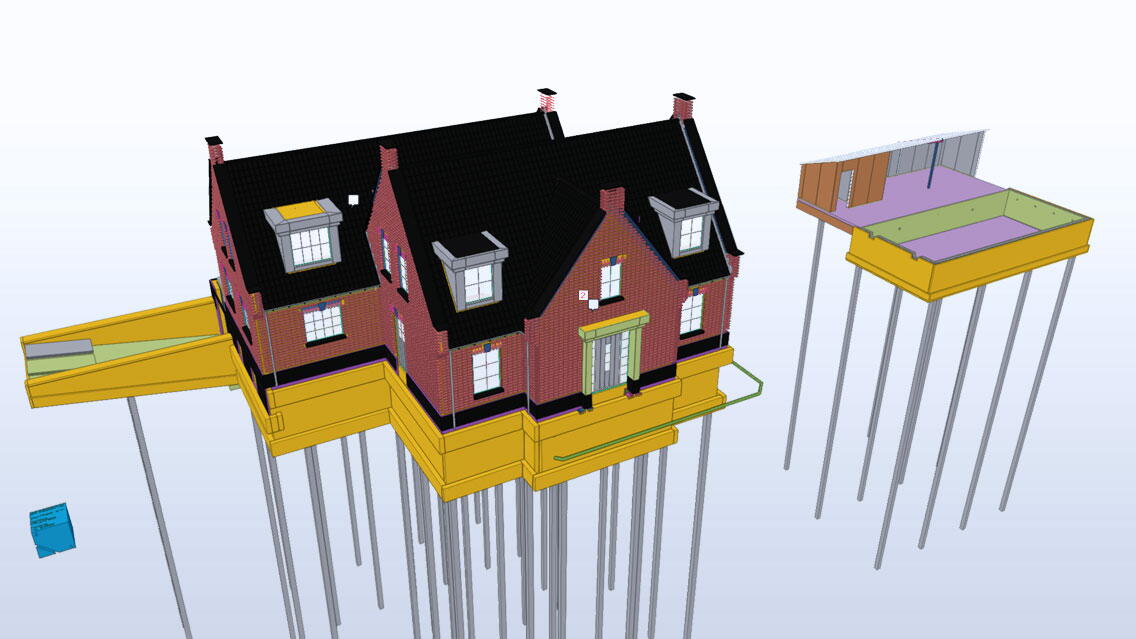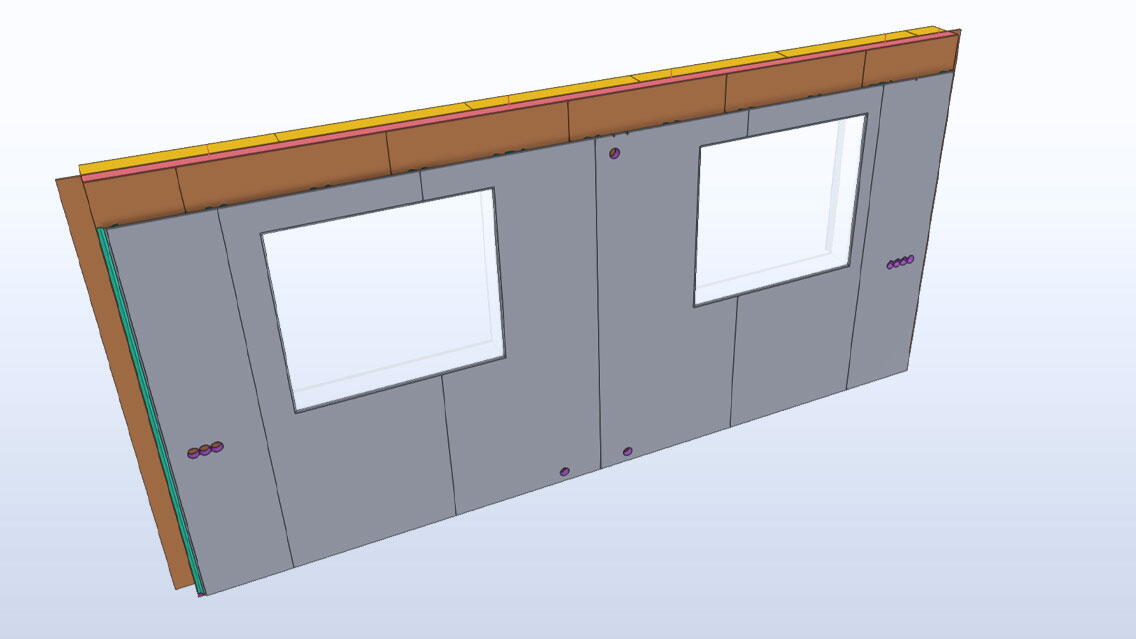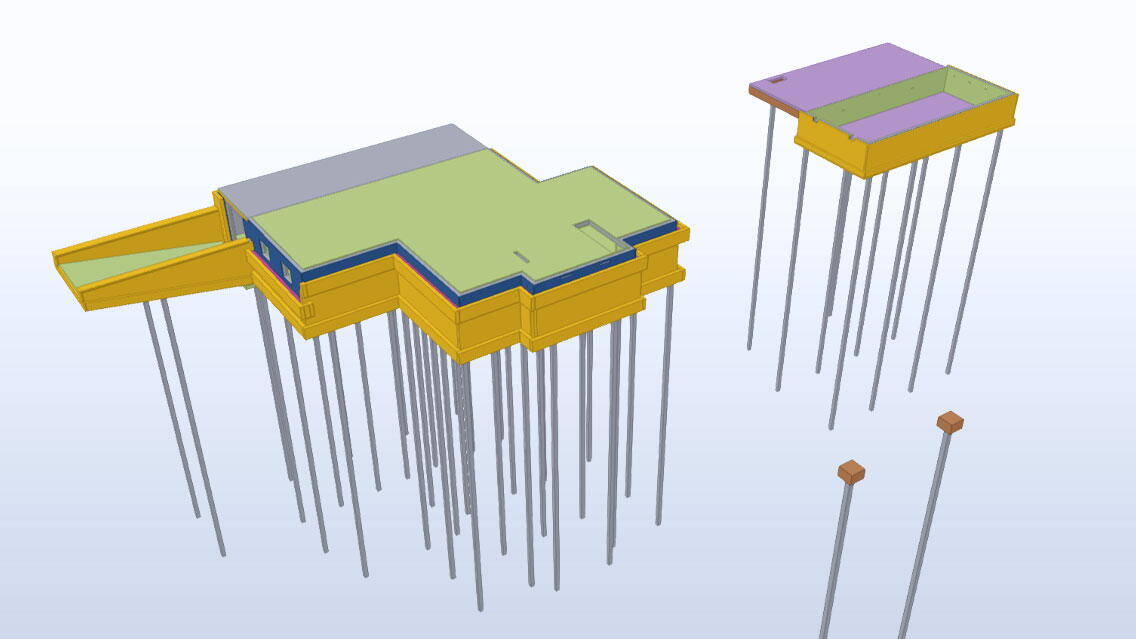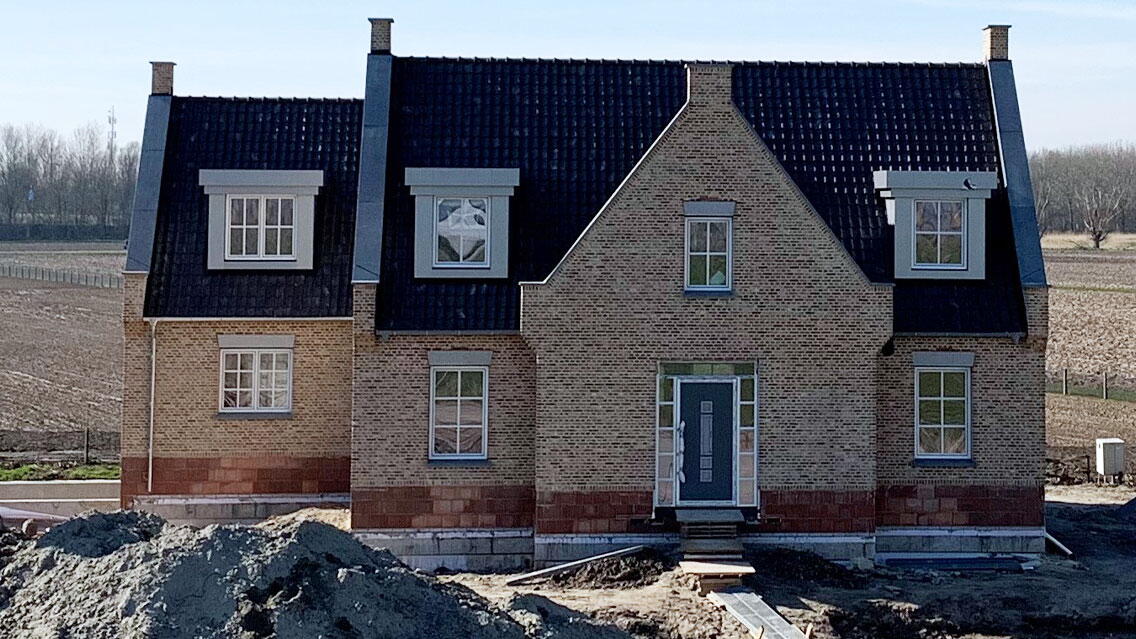The project concerns a detached house in Ridderkerk. The client wanted to build the house under his own supervision. CFP Engineering took up the challenge and made maximum use of the Tekla model.
Based on the Kort Geytenbeek Architect’s sketch design, CFP Engineering created a complete model, which included:
- Pile foundations
- Concrete floors and concrete walls for the basement
- Steel frame elements for the superstructure, including flashing and sheet metal
- WTW installations
- HWA and DWA installations
- E&W installation in steel frame walls and floors
- Detailing
The house is constructed as a prefabricated steel frame house. In this manufacturing method, the gypsum fiber cladding and/or OSB cladding are attached to the cold-formed profiles using ballistic nails or self-drilling screws. Any insulation in the frame or on the frame, battens, etc., are applied per element.
Element construction is controlled from Trimble Connect with an IFC model and the corresponding markings linked to the 3D model. Because of the great dimensional stability of the building system, it was possible to assemble the complete shell of the house in seven days.
The challenge in this project lay mainly in the desire to control the entire work preparation, production, and assembly from the Tekla model. The goal was to get all relevant information to the producing companies with as little manual work and/or data loss as possible. Direct control of the machines was an important condition. Easy Housing delivered the steel frame, bundled per element, through the export possibilities of Tekla. All the recesses for piping were provided in the profiles.
The metal sheets applied on the first floor were processed in the model, so the necessary drawings could easily be provided to Duofor. Duofor delivered the metal sheets per prefabricated element on specific lengths.
The steel plate bending was worked out in detail in Tekla. To get STP files from the model, Tekla and Pery't Lam developed a method to convert export files from Tekla so that the machines could be controlled directly. After consultation with Tekla and Perry ‘t Lam, a method was developed to convert export files from Tekla so that the machines could be controlled directly.
A specifically developed plugin for Tekla made it possible to generate production files for Innosteep with which a perfect ‘fit’ could be made between the concrete work, with relatively large size tolerances, and the dimensionally stable steel frame elements.
The sheet metal for the dormers, executed in Leebond, was also worked out in the Tekla model. For this part, it was not possible to generate specific machine files. However, the export files in DWG format could be converted by Leebo, the prefabricator, after which the milling files could be generated.
During production, a record was kept of which elements were produced each day. This information was then processed in the model. With this information, the production staff could immediately see how far they had progressed with the prefabrication.
Using the sequence tool, the assembly sequence was determined and animated. Based on this, the production sequence was also determined. The export of this tool was used to make information stickers on the elements. Information stickers with the brand name, weight, placement number, freight number, and dimensions were necessary during transport and assembly.
To create the truck layout, the stacker tool was used. Because the layout of the truck was accurately determined during the engineering phase, the number of transport movements was minimized, and it was possible to assemble the elements at the construction site directly from the truck without the need for temporary storage.




